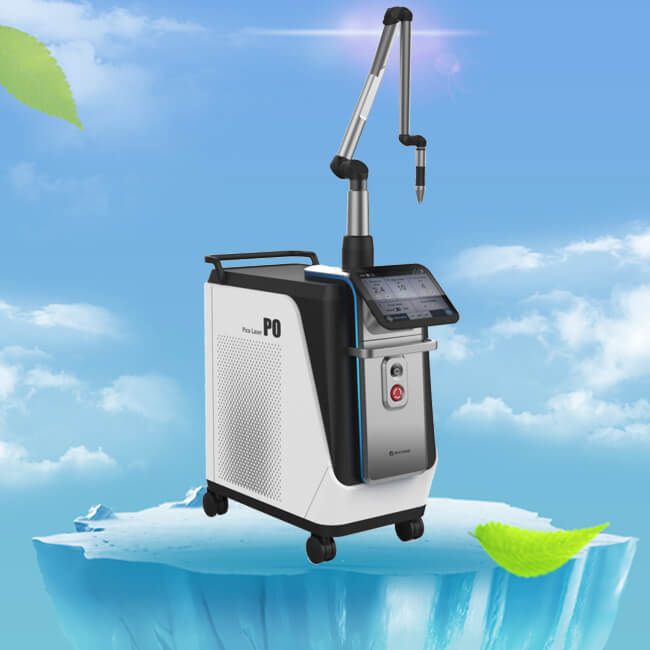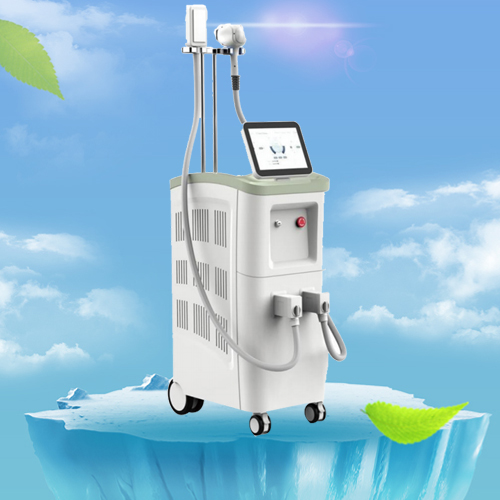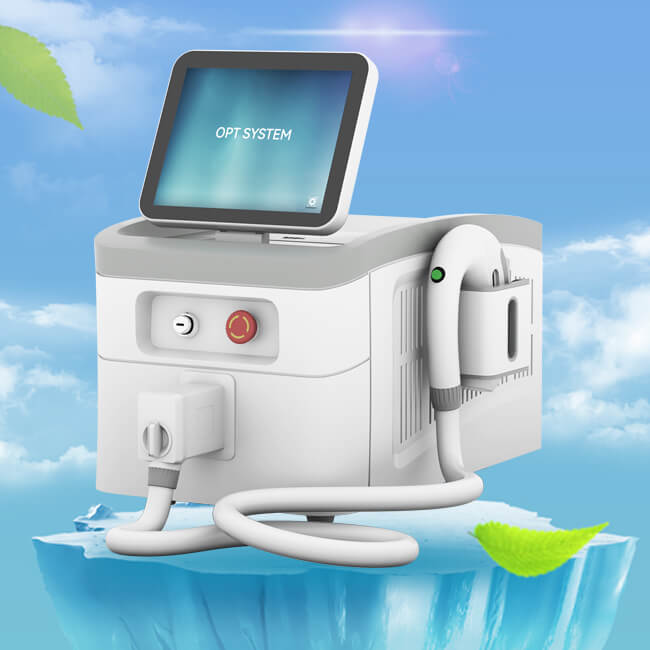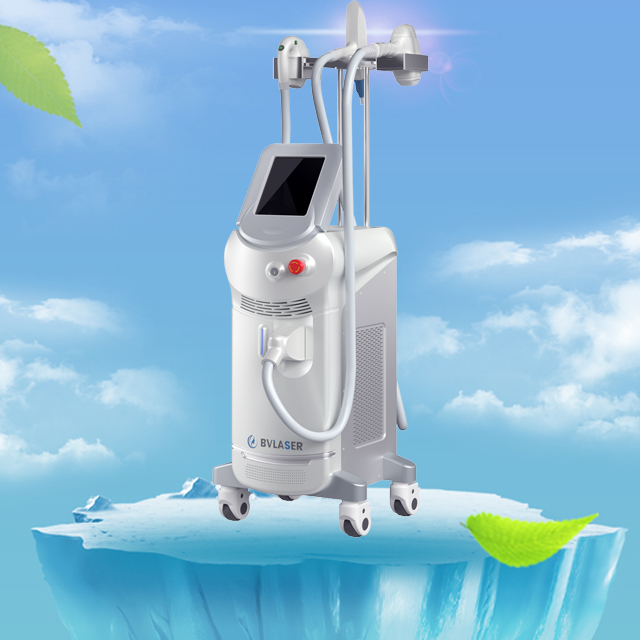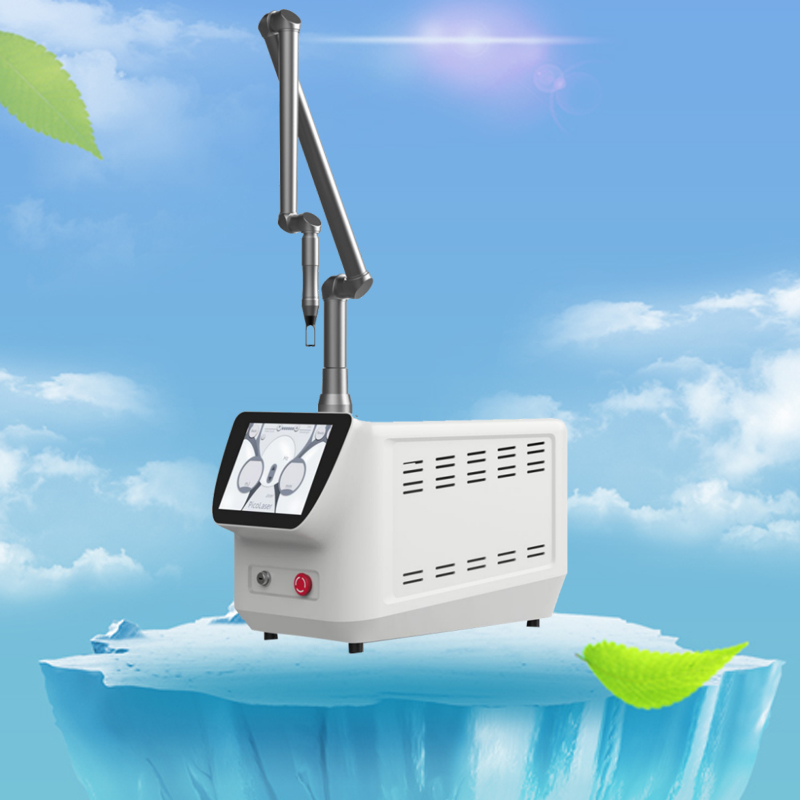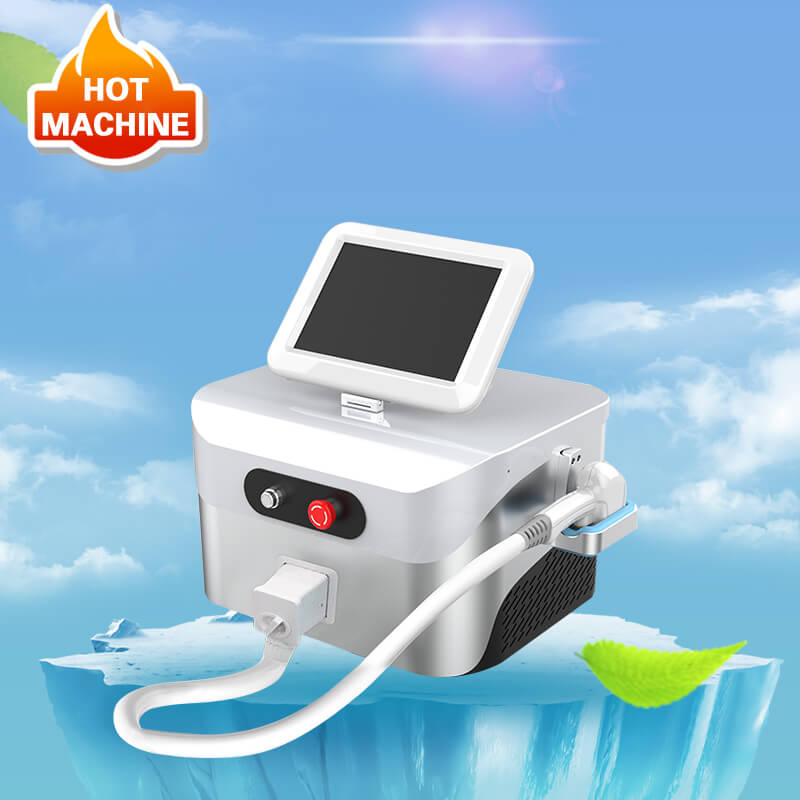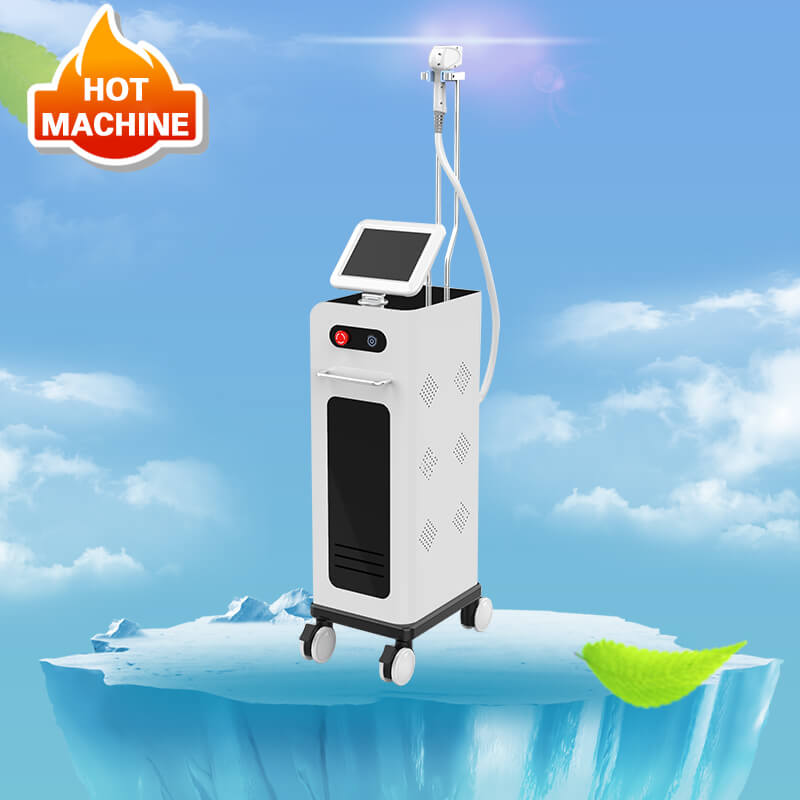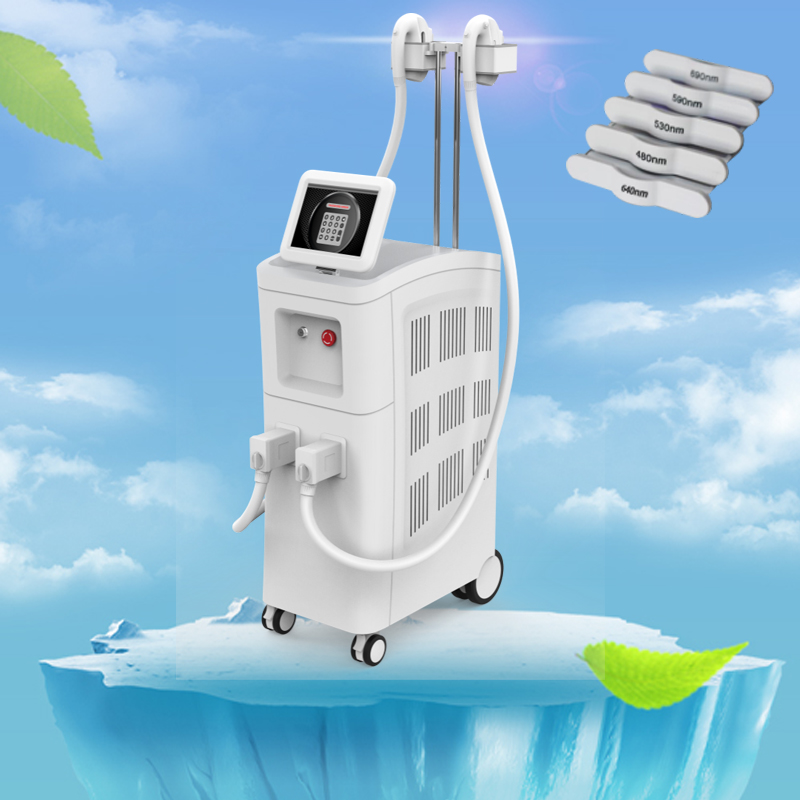Get to know the Q-switched ND YAG laser technology that removal tattoos
Author:baishilf Time:2024-07-24 16:45:51
While many people may think getting a tattoo seemed like a good idea at the time, that can change. Luckily, modern advancements in Q-switched ND YAG laser technology have made it possible to safely and effectively remove permanent ink from the skin. Bestview Laser is a ND YAG laser machine manufacturer, we have Q-switched ND YAG laser tattoo removal machine for sale.
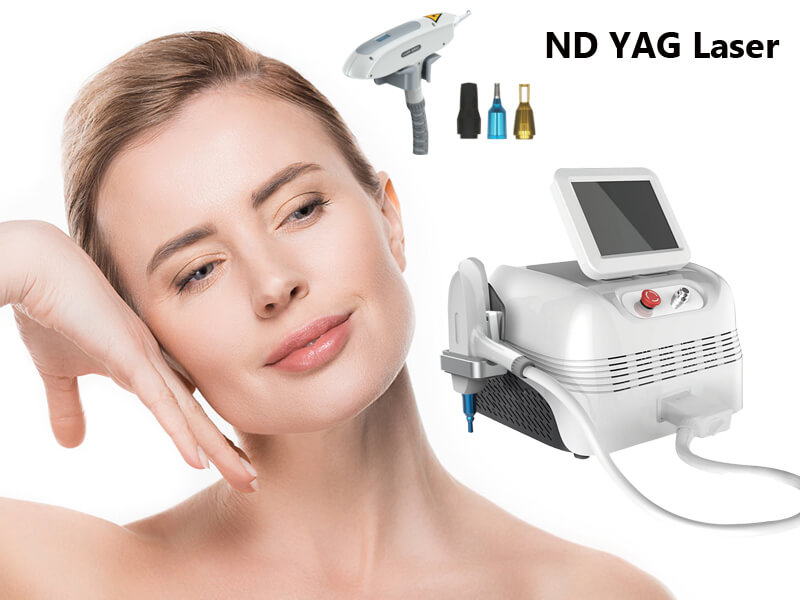
1064 nm ND YAG laser is a non-ablative laser. This means that there is no break in skin tissue continuity during the treatment. It is designed to target pigment cells. This specific wavelength are absorbed preferentially by pigments (melanin) and the resultant heat will cause generation and propagation of waves that cause damage to the cells containing pigment. These damaged cells will then be cleared from the site resulting in lightening of the pigmented site. Lasers are effectively used for the removal of pigmentation, tattoos, vascular changes, permanent hair removal, onychomycosis (fungal nail infection), and for skin rejuvenation and renewal. During the treatment, one might feel a sensation of stinging, pricking, and warming which can be reduced by contact cooling and, if necessary, local anesthesia. After treating vascular changes, pigmentation, tattoos, and hair, there can be redness and burning, possible mild swelling, and itching which can last for several days post-treatment. When removing pigmented changes and tattoos, frosting (a white glaze you see at the end of the treatment over the treated change) can appear and typically lasts for 20-40 minutes, and purpura (intense redness with possible capillary bleeding that mostly passes within several days).
Q-switched lasers deliver energy fastly
The gold-standard laser used for laser tattoo removal today is called a Q-switched laser. Q-switched lasers work by delivering energy at such a rapid speed that it breaks or splits the ink up into tiny particles. The body’s filtration system (or immune system) then comes in to carry off the debris.
Most Q-switched lasers deliver laser energy in nanoseconds. A nanosecond is equal to one billionth of a second. Wikipedia further defines a nanosecond by saying “one nanosecond is to one second as one second is to 31.7 years.” Conversely, a picosecond is one trillionth of a second. The theory is the faster the energy is delivered, the faster it breaks the tattoo ink up into smaller particles making it easier for the body to filter it away.
Determining witch Q-switched laser is right for you
In order to target the different color pigments in a tattoo, the selection of the appropriate Q-switched laser must be determined by an experienced medical professional and cosmetic laser practitioner. They will be able to determine which laser or hand piece combinations are best to effectively remove a patient’s tattoo. They will take into account several factors including the skin’s natural pigment and the pigments in the ink. Dark blue and black inks respond really well to laser treatments. Lighter pigments like white, reds and pinks can be harder to remove. There are various types of Q-switched lasers used to remove tattoos, depending on the color of the skin and the tattoo pigment. Multi-colored tattoos require two or more types of lasers to effectively remove them. The lasers are usually identified by the medium used to create the wavelength, which is determined by measuring its nanometers (nm).
The Q-switched ND YAG laser for tattoo removal
The Q-switched ND YAG laser has been the preferred laser of choice and really the “gold standard” in laser tattoo removal. It is the only laser suitable for all skin types and dark skin in particular, as the light it creates is not absorbed by the melanin (skin pigment) and therefore less likely to result in hypo or hyper-pigmentation. Unlike other lasers, the ND YAG laser overcomes the issue of excessive melanin absorption, targeting the ink and not the melanin. It is used to effectively remove all ink colors, but particularly targets darker inks like blue, black or red pigments in all tones. The ND YAG laser will be used at each of patient’s tattoo removal, if they have color in their tattoo a dye hand-piece will also be used at some point during the treatments to target each specific color.
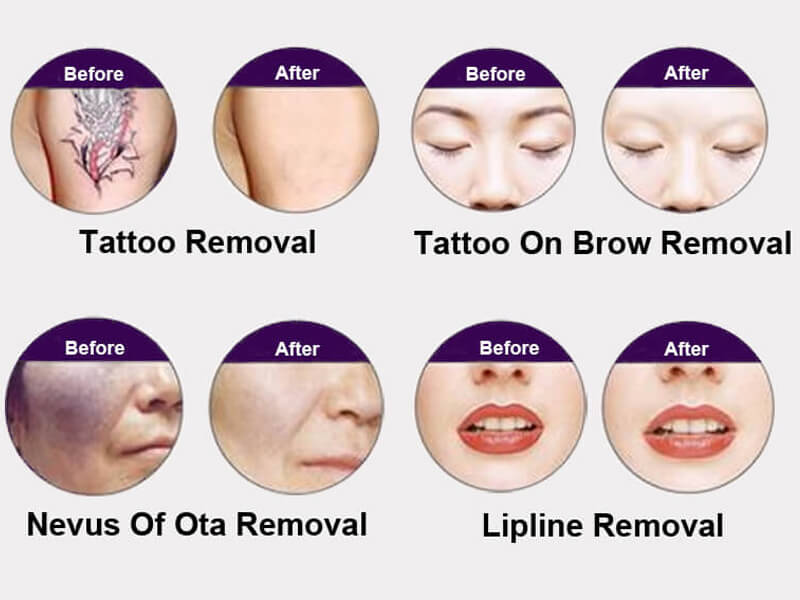
ND YAG laser types matter & side effects may occur
As with any cosmetic procedure, ND YAG laser treatment is not without risks and potential side effects. The potential side effects include hypo or hyper-pigmentation, darkening of the tattoo (caused by changes in the chemical composition of certain inks), blistering, allergic reactions and scarring. The likelihood of experiencing any of these things is a variable. Blistering can be a normal part of the ND YAG laser tattoo removal process and in most cases should not leave a patient with a scar. However, it is imperative to seek treatment from an experienced provider that will supply the patient with aftercare instructions and care should they experience a complication. The provider should also thoroughly explain the numerous factors that influence the outcome of treatments, and they will help patients to set realistic goals and avoid unwanted side effects. Patients don’t have to live with an unwanted tattoo. With the help from a ND YAG laser, they may be able to restore their skin to a blank canvas, or at least a minimalist painting.
Benefits of Q-switched ND YAG laser for Pigmentation
Q-switched ND YAG laser treatment offers several benefits, including:
1.Effective pigmentation removal: ND YAG laser energy specifically targets and breaks down excess pigment in the skin, resulting in a more even skin tone.
2.Non-invasive procedure: Q-switched ND YAG laser treatment is a non-surgical procedure that does not require incisions or sutures.
3.Quick treatment sessions: The procedure typically takes only a few minutes to complete, depending on the size and number of areas being treated.
4.Minimal downtime: Immediately after the treatment, most patients can resume their normal activities, with minimal discomfort or side effects.
Candidates for ND YAG laser treatment
Candidates for ND YAG laser treatment include people with:
1.Vascular changes (capillaries, hemangiomas, venous lakes, vascular malformations)
2.Pigmented changes (melasma, sunspots, moles)
3.Unwanted hair they wish to permanently remove
4.Tattoos (blue, gray, or black)
5.Fungal nail infection
When do use Q-switched ND YAG laser?
Q-switched ND YAG laser are used mainly for pigmentary disorders resulting in darker patch/lesions. However, not all lesions have good results with Q-switched ND YAG laser. It is important to get the correct diagnosis at the start to ensure careful selection of treatment modalities. Another major indication of Q-switched ND YAG laser is for tattoo removal. Amateur tattoo, those purely black tattoos seems to work better than multicoloured tattoos (professional tattoos). Black pigments work better compared to other colours. Apart from these, Q-switched ND YAG laser also produces rejuvenation effect and provides lightening of the skin.
How is the ND YAG laser procedure?
Most of the patients are tolerable to the discomfort cause by the ND YAG laser. Hence, there is usually no need for anaesthetic creams for this procedure. Firstly, the skin is cleansed, eyes covered by protective googles followed by the laser therapy. You will expect mild discomfort/pain which is usually tolerable. The whole procedure will take about 15-30 minutes.
After the procedure, you may experience redness over the treated site which may last few hours. Most of the time, there is no swelling and most patients can return to work almost immediately. Immediately post laser, you may or may not see lightening of the pigmentation. In fact, the pigmented spot may even darken for 1-2 weeks before getting lighter. However, the skin lightening and rejuvenation may be seen immediately post-laser. Do not expect dramatic result.
Is ND YAG laser an one-off treatment?
Most of the time, one treatment does not yield adequate results. Depending on the diagnosis, the number of treatment needed is variable. Repeat treatment is often scheduled 4-6 weeks later.
How is the of Q-switched ND YAG laser procedure performed?
The procedure for Q-switched ND YAG laser treatment typically involves the following steps:
1.Cleansing: To remove any dirt, oil or makeup, the treatment area is thoroughly cleansed.
2.Eye protection: To protect the eyes from the laser light, the patient and the healthcare provider wear protective eyewear.
3.Laser treatment: The ND YAG laser machine is directed to the targeted pigmented areas of the skin. The laser emits short pulses of high-energy light, which gets absorbed by the excess melanin in the skin. This energy breaks down the pigmented cells without causing harm to the surrounding tissue.
4.Cooling and post-treatment care: After the laser treatment, a cooling agent or cold compress may be applied to soothe the skin. Post-treatment care instructions will be provided, which may include the use of moisturisers, sunscreen, and avoiding direct sun exposure.
How many ND YAG laser treatments are needed for specific changes?
1.Vascular lesions: The number of sessions depends on the form, size, and position of the lesion, and skin type. Smaller capillaries can typically be removed in just 1 to 3 treatments. Larger veins and spider veins may require several treatments.
2.Pigmented changes: The number of treatments varies based on the type of pigmentation, while solar lentigines typically disappear after one treatment, melasma might need several sessions.
3.Tattoo removal: The tattoo’s color and pigment depth influence the duration and outcome of the laser tattoo removal process. Several treatments may be necessary, spaced at least 4 weeks apart.
4.Fungal nail infection: 5-10 treatments, spaced two weeks apart, are typically required for full effect.





